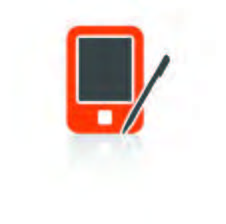Beyond Smart Boards
Forecasting the future is a tricky business. Thomas Edison once predicted the extinction of textbooks, saying, “It is possible to teach every branch of human knowledge with the motion picture.” Likewise, Tom Hammond, assistant professor of teaching, learning, and technology, proves his mettle by assessing five trends in educational technology.
 COLLABORATIVE AUTHORSHIP
COLLABORATIVE AUTHORSHIP
Wikis and other collaborative tools such as Google docs have tools such as Google docs have significantly lowered barriers to sharing and editing text. Wikipedia, with its millions of articles in hundreds of languages, has provided a working model of practices and a compelling demonstration of potential. Even organizations such as the CIA are experimenting with their own implementation, Intellipedia. I anticipate that (a) the tools for such collaboration, like the shared image or video editing, will become even more powerful and (b) students work, like that of professionals, will become a process of collaboration and sharing.
 NON-TEXTUAL MEDIA
NON-TEXTUAL MEDIA
Since ancient Sumeria, the dominant form of fixed expression has been the written word (or grapheme). Many of our earliest productivity technologies—such as printing presses and typewriters — were aimed to support this process of putting words on paper. However, images and multimedia are now taking their place as drivers of both mass communication and personal messages. Tools such as Prezi and VoiceThread help bring the same power and flexibility to our non-text editing as we have grown to expect from our text editing. Scholars, teachers, and students will incorporate more of these non-textual media into their writing.
 GLOBAL POSITIONING
GLOBAL POSITIONING
Today’s personal GPS units are what cell phones were back in the 1980s: clunky, chunky handheld devices. Conversely, cell phones are now ubiquitous, cheap, and powerful, and deal in text, images, and video. It’s only a matter of time when location-aware technologies will be added to this platform too. How many miles do you walk in a day? Where does your cat go in the neighborhood when you’re off at work? In the future, even the most inexpensive cell phones (and pet collars?) will offer some version of these capabilities.
 WE WILL ALL BE GEOGRAPHERS
WE WILL ALL BE GEOGRAPHERS
Our always-on geographic location technology will change the way we interact with data. Our personal data will come bundled with geo-referenced tags: this vacation photo was taken at 43.079079° latitude, 79.078310° longitude (overlooking Niagara Falls, from the west side of the horseshoe).
Google Earth and Google Maps are fast becoming ubiquitous platforms for creating and displaying geo-referenced data, and the Flickr photo-sharing site has more than 80 million geo-tagged images. As more causal-use applications for geo-referenced data emerge, expect our way of thinking about everyday topics to change.
 TOUCH SCREENS
TOUCH SCREENS
With the popularity of the iPhone, touch-sensitive interfaces will be the industry standard. previously, touch-screens were used for very specific, very specialized purposes, like using a kiosk at the airport or grocery store. A more general-purpose tool, such as a computer or phone, needed an input device like a keyboard. As the cost of touch interfaces shrinks, be prepared to say good-bye to your computer’s mouse, push-button phones, and the television remote… unless, of course, you still want the remote to avoid getting of the couch.